Master Guide to Recruitment & Retention in the Manufacturing Sector
What you need to know about building a system that attracts qualified candidates and keeps them.
The State of Recruitment & Retention in Manufacturing


Your Prospective Employees Have Options. What are You Doing to Stand Out?
Over the past 10 years, Vye has become an expert in manufacturing marketing. We’ve worked with countless companies across the Upper Midwest to help them refine their sales processes, create more engaging brands, market services and offerings, and recruit talent. Over the course of 2020, we saw a major shift in the sector, unlike anything we’ve seen before.
To say that the Covid-19 pandemic put manufacturing companies at risk is an understatement. From production lows and shutdowns to production overloads (in some cases, upwards of 180% capacity) coupled with supply chain pressures driven by unrealistic timelines and materials and logistics challenges. All of this, while enforcing new safety protocols in order to ward off an untimely shutdown due to a Covid-19 outbreak.
Manufacturers have not had an easy go over the past 12 months. And the next 12 look to be equally challenging. According to a 2021 CNN Business article, the shortage of workers for factories across America is a $1 trillion problem.
As we watched our manufacturing partners go through these tremendous challenges, we saw a trend emerge. 97.4% of companies we surveyed in the Upper Midwest intend to hire in 2021. Everyone is in desperate need of qualified candidates. In a recent survey by the Federal Reserve Bank of Minneapolis, one in six businesses in the region said their biggest challenge is labor availability.
As a country, we are experiencing unemployment rates unlike anything we’ve seen in recent years. According to the Congressional Research Service, “The unemployment rate peaked at an unprecedented level, not seen since data collection started in 1948, in April 2020 (14.8%) before declining to a still-elevated level in December (6.7%).” Despite this, it seems to be an impossible task for many manufacturing companies to find qualified workers.

What's Going On?
Theories vary, but it seems to come down to a few key factors:
- Baby boomers who would have retired in 6-10 years have decided to retire early to stay safe.
- Lack of childcare prevents parents from re-entering the workforce.
- Those who are unemployed (from industries like hospitality, food, etc.) disqualify themselves because they don’t believe they have the skills required.
- Some prospective employees are holding out to see if their previous employers will hire them back.
- Many industries are hiring, and manufacturing doesn’t appeal to a broader market of prospective employees—i.e. A negative perception of the industry.
- With the additional unemployment relief compensation implemented in the wake of Covid-19, entry-level workers are in some cases discouraged from seeking employment, as the amount they are getting matches or exceeds what they could earn.
Knowing that our manufacturing partners are faced with these challenges, we set out to create a resource to help them. In this digital e-book, you will find recommendations to help you build and sustain a recruitment and retention plan that works. Our goal is to arm your hiring department with the insight to help them attract—and keep—the right people during these uncertain times.
To create this resource, we conducted a survey of manufacturers in the Upper Midwest. The survey generated 38 responses from companies ranging from under 50 employees to over 1,000 employees. We facilitated a roundtable discussion in partnership with the Greater St. Cloud Development Corporation. We also did an immense amount of digging into relevant surveys and research from reputable organizations conducted across the United States.
In This Resource, You Will Learn How to:
- Identify your ideal candidate and reach them on their terms.
- Understand what other companies across the midwest, and across the nation, are doing to respond to the increased need for qualified candidates.
- Create an employer brand that attracts the right candidates.
- Use technology to streamline and automate the recruitment process.
- Retain top talent through a systematic approach to employee engagement and satisfaction.
Let’s dig in.
Identify & Attract the Right Candidates


Find, Recruit, and Retain Top Talent in Manufacturing
There’s a common misconception about careers in manufacturing. The layperson may assume that careers in the sector are dirty, monotonous, and poorly compensated. This perspective rarely reflects the reality of the manufacturing industry today. In a highly mechanized industry, careers in manufacturing often require specialized skill sets and are well compensated. Despite this, young people rarely consider a career path in manufacturing when weighing their post secondary education options.
This perception problem boils down to an industry-wide brand challenge. How can manufacturing-rich communities create demand? Some regions have tackled this challenge head on with events, campaigns, and programs. A good example of this is the Northeast Wisconsin Manufacturing Alliance (NEWMA). NEWMA dedicates enormous effort towards improving the regional perception of manufacturing. They often partner with other powerful organizations, like the New North, to accomplish their goals. Central Minnesota Manufacturing Association is another example of an organization working to improve regional perceptions. They do this through partnerships with local educational institutions, among other efforts.
A collaborative effort among community entities is an important part of shifting perspectives across a region. But what can you do as an individual company to change mindsets and attract talent?
Start With Identifying Your Ideal Candidate
Before you can tackle broad challenges like industry perception, you must first understand who you are trying to attract. Afterall, you don’t need to reach everyone. Just the right people. Understanding your ideal candidate will influence how you talk about open positions and where you promote those positions. We often refer to these audience profiles as “personas.” Personas are fictitious, generalized characters that reflect the needs, goals, and behaviors of your ideal candidate. It’s common for a manufacturing company to have several employee personas.
Build Your Candidate Personas
We suggest narrowing your personas to just one or two to start. Ideally, start with the candidates who could fill your highest demand areas. What are their primary characteristics? What words describe them? What personality type works in the role?
Every role will look different. For example, a great candidate for your engineering team is dramatically different than a candidate for a production role. You should start by asking the following five questions. We’ll use engineering as our example:
- Words to describe an ideal engineer candidate in the manufacturing industry:
- Curious
- Dependable
- Detail-oriented
- Common personality types:
- Problem-Solver/Analyst
- DiSC: CS, C
- Myers-Briggs: ISTJ, ESTJ, ESFJ,INTJ
- Common titles held by prospective engineers:
- Controls Engineer
- Mechanical Engineer
- Manufacturing Systems Engineer
- Watering Holes (places your prospects go for information):
- Word-of-mouth
- Social media and industry publications
- Job websites like Indeed (more information on that below)
To build a well-rounded candidate persona, be sure to talk to:
- Hiring team: They will know which questions get asked frequently and what prospects care about.
- Current staff: They will be able to share things they are interested in and where they go for information.
- Prospective candidates: Think about people you’d love to hire. Consider asking them questions to better outline your persona.
Need help outlining your ideal candidate persona? Use this worksheet.


Build a Careers Page that Works
Once you understand the candidates you’re trying to reach, you can build a Careers page that is designed to attract the right people. One of the most impactful things a company can do to increase visibility and engagement is to improve their Careers page. Here are top things to address on your Careers page:
If hiring is a top objective in 2021, consider moving Careers to the main navigation on your website. Some companies will even list Careers as the first navigation item. In addition to this, always place a Careers link in the footer. This is a common place for people to navigate when seeking career opportunities.
SEO plays an important role in the likelihood of your company page appearing in search queries. Be sure your meta title and meta description are filled with relevant keywords. Include the top roles you often hire for in the meta title and description.
Meta Title: Should be 50 characters or less and include keywords. This is what appears in Google and should be descriptive of what they will find on the page. It should be unique for every page and should compel a user to visit the page.
Meta Description: Should be between 50-160 characters long and include keywords. The entire purpose of this is to get a user to click, so make sure it reflects the page and present compelling information. This should be unique for each page.
Be sure to include keywords throughout the page, woven organically into the content. Keywords change depending on the specific vertical, but here are the top keywords you should consider.
Candidates should be able to get a feel for your company through the Careers page. Sharing your mission, vision, and values can help set expectations.
Prospects want to know about pay structure. We know this can be a sensitive topic. But how can you find ways to set expectations while leaving flexibility for an individual’s unique approach? Can you showcase a typical commission structure? Can you talk about base pay? Can you speak in averages? Remember to share details about pay structure such as growth opportunities, timing of performance reviews, team goals/incentives available, frequency of commissions paid, etc. Cover broad beliefs and practices related to compensation such as non-cash incentives or perks such as product or service bonuses and trips. Taking time to share compensation information up front can save a wealth of time throughout the hiring process, including final negotiations on salary.
According to a Federal Reserve Bank of Minneapolis survey of 476 manufacturing operations of various sizes across the Ninth District (Minnesota, Montana, North Dakota, South Dakota, the Upper Peninsula of Michigan, and Northwestern Wisconsin), manufacturing employers across the board are anticipating an increase in compensation to remain competitive. Here’s a chart from that survey:

What are the questions your hiring team gets most often? Answer those in an easy-to-access spot on your Careers page. Ideally, this would be a collapsible section so it doesn’t take up much space. Do candidates want to know about training available or certifications needed? This could include things like: training available to employees, growth opportunities, hiring process, etc.
Don’t forget to outline the benefits your company offers, such as health insurance, short- and long-term disability, retirement plans, paid time off, provided technology, healthy living savings plans, etc.
According to a Star Tribune article, employers are taking extreme measures to attract candidates: “Up near the Canadian border in Warroad, Marvin Windows is so desperate for factory workers that it’s dangling a $2,500 signing bonus and a $1,300 relocation incentive in addition to bumping up the starting wage by a buck to $16 to $20 an hour.”
In addition to standard benefits and perks, consider “non-traditional” offerings. Are there ways your company can offer flexibility to employees? According to FlexJobs, 82% of employees said they’d be more loyal and less likely to leave if they had more flexible jobs.
What differentiates your company from other manufacturers? How about from other organizations in general? Outline these clearly, boldly, and proudly. Don’t forget to back it up with data. That could include things like: employee survey results, awards and accolades, employee testimonials, average tenure of employees, community involvement, etc. Culture is more than having a ping pong table in the breakroom. Prospects want to understand the team dynamic and what to expect if they join your team.
A picture is worth a thousand words. Imagine what a video is worth! If your goal is to help candidates visualize themselves within your company, the best way to do that is to include video and images of your employees. Here's a video we helped our client, Kern Laser Systems, create about one of their team members. Testimonial videos like this can help candidates understand the culture, environment, and employee landscape.
This is a technical requirement that might require the help of a developer. But it’s critical that your Careers pages (including the individual positions) are optimized for mobile. 78% of candidates who own a smartphone would apply for a new job through their mobile device if given the opportunity.
This is, perhaps, the most impactful thing you can implement on your Careers page for quick results. Gating (requiring user information, such as an email, in order to proceed) the application process can help narrow the pool and disqualify candidates, but it can also dissuade qualified applicants who don’t have the patience to go through a lengthy process. We call this the ‘Form Hurdle’. Our recommendation is to simplify the application process as much as possible. This can be done in a number of ways. For individual positions, simplify the form as much as is reasonable for that position. On the main Careers page, consider offering a “general application” quick apply form, where a candidate can select their areas of interest from a dropdown. This is something that can be modified over time. Need a large pool to draw from? Make the form easier to fill out. Need more qualified, but fewer, candidates? Add questions.
Career Page Examples
Looking for some inspiration? Here are a few Career pages designed to work. We’ve included examples for a variety of industries because, let’s face it, in many cases you are competing for candidates outside of the manufacturing sector!
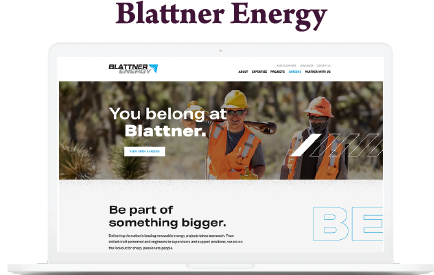
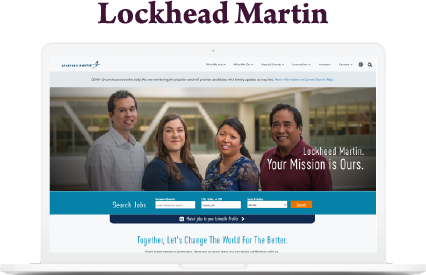
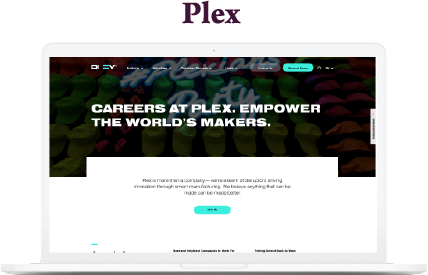
Build Optimized Position Pages
Creating a website experience designed to attract and convert doesn’t end with the main Careers page. That same attention to detail must be extended to the individual position pages. This is a critical step, and the content developed for these pages can (and should) translate into other job sites like Indeed or ZipRecruiter. Much of what was covered above applies here as well. Additionally:
Much like your main Careers page, it’s important to optimize each position page for search. This includes filling in the meta title and meta description. It also includes working in relevant keywords throughout the content. In most cases, these keywords revolve around the position itself, and any variation of that position title that might be used by a candidate. For example, if you are hiring for a sales position, you would want to work in a variety of titles naturally within the content. Things like: Account Executive, Direct Salesperson, Distribution Sales Representative, Inside Salesperson, Equipment Sales Specialist, etc. By organically working the variations of the title into the content on each individual position page, you signal to Google to serve your page up when someone uses whichever term is relevant to them.
Lastly, you’ll want to make sure you add Google’s job posting structured data to job posting web pages in order to make your job postings eligible to appear in a special user experience in Google Search results.
While each individual position page shouldn’t be a repeat of the main Careers page, it’s important to include relevant content. For example, how can you highlight your company’s core values and how they apply to that specific position? Are there position-specific testimonial videos you could incorporate into the content? Are there specific benefits that only apply to that position, in addition to the standard benefits? Position pages tend to be more content heavy and include less visuals, but don’t let that stop you from including videos and photos if they are relevant to your audience.
If you are struggling to find candidates, consider removing barriers. One way to do this is by encouraging those without prior experience to apply. Explain your process for onboarding and ongoing training. Highlight transferable skills.
There is a temptation in this industry to be straightforward with position descriptions. That makes sense, since we’re often talking to people who would be described as no-nonsense, detail oriented problem solvers. That, however, can be damaging if taken too far. While you may want to avoid overly fluffy language, you shouldn’t shy away from the epic nature of the role. Manufacturing is the backbone of America. It often involves hard work and results in critical products our culture needs to thrive. Stray away from pointing out the obvious (e.g. “you must be able to lift 50 pounds”) and lean into the extraordinary (e.g. “you are crafting materials that will be used across the globe for decades to come.”).
Individual Position Page Examples
Here are some excellent examples of individual position pages that are designed to convert. Once on these Careers pages, navigate to several of their individual job posting pages to get a broad perspective of how these companies are positioning their open careers.
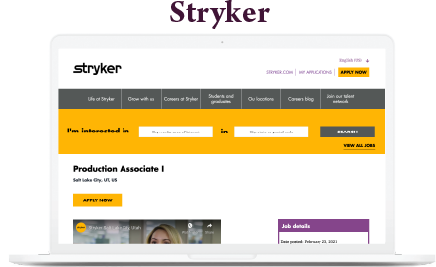
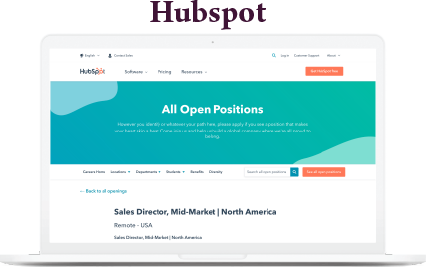
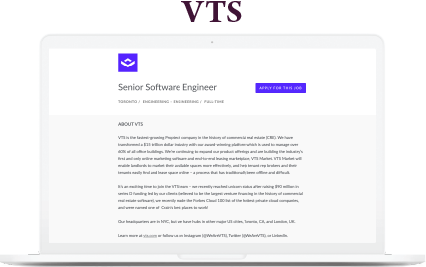
Promote Where it Counts
Once you have a firm grasp on the audience you’re trying to reach, as well as solid content around Careers and specific positions, you can begin the process of distribution. Distribution is perhaps the most experimental phase of the recruitment process. We strongly encourage you to think of this phase as an iterative process. Recruitment tactics can be expensive and time consuming. The best approach is to test different tactics, measure results, dump ineffective strategies, and go all in on effective ones. Here are some top recruitment tactics:
Leveraging job boards such as LinkedIn Careers, ZipRecruiter, and Indeed are an important part of a well-rounded recruitment process. The amount you spend within each platform should be based on historical data in terms of candidate quality. Don’t have historical data? Start collecting data with your first posting, noting key elements such as number of qualified candidates, number of individuals advanced to the interview process, number of offers extended and accepted. Want a list of job boards to consider? Get it here. Don't forget about local job boards. They often offer unique opportunities through local channels. A good example of a local job board is the Greater St. Cloud Jobspot.
Share positions on your social media feeds and encourage employees to share with their networks. Be sure to share on both your primary feed, as well as in your story (relevant for Facebook and Instagram). Boosting specific posts will also result in a broader reach.
There are specific actions you can take on most social channels to promote open positions. For example, Facebook allows you to add a Jobs tab to your company page, which links to your open positions. LinkedIn also allows you to post job positions.
Paid media plays a big role in how visible your company and specific positions are to an interested candidate. The world of paid media is deep and complex, but here are the most common paid media avenues:
Paid search, often called PPC (Pay Per Click), gives companies the ability to feature their links at the top of search results. This article does a good job summarizing the elements of paid search.
Display ads are visual ads you see while browsing various websites. These are effective for general employer branding, and can sometimes be effective for specific position recruiting (although it is more rare). More info on that here.
Social paid media refers to the promotion of specific messages and visuals on the most popular social media platforms. Before investing in paid advertising on social media platforms, it’s critical to know if your target audience is actually on that platform. This is hopefully something you uncover in the persona exercise.
When it comes to a local recruitment strategy, traditional media can be highly effective. This might include things like billboards, radio ads, and mailers. Traditional media takes a broad stroke approach to attracting candidates. This casts the net wide, but can also be frustrating as it lacks the ability to track results and hone in on what works
Another downside is that local traditional media focuses on attracting candidates from the local market. This often puts you in a position of recruiting employees away from other local manufacturers. This is especially prevalent in smaller communities. It can be a frustrating experience to collectively draw from the same pool. Many companies would prefer, instead, to target candidates outside of the local market.
Leveraging local partnerships is a crucial tactic in filling your candidate pipeline. Community partners could include your region’s economic development center (like the Greater St. Cloud Development Corporation). It could also include local colleges, universities, and high schools. It’s important to keep in mind events and programs that educational institutions host to help connect their students to future employers. By developing strong relationships with your local community resources, you will get a front row seat to these opportunities.
According to our recent survey, 73.7% of employers indicated that they work with local schools and organizations to create a candidate pipeline, vs. 26.3% who do not.
Most of these partnerships were with local universities, colleges, and highschools, but some cited faith-based organizations, programs like Junior Achievement, and events like EPIC.
An incredibly powerful, and often underutilized, resource for recruitment is your current employees. They are often connected to the groups of people you’re trying to reach. They can speak to the company’s process, values, and approach. They can share their own experiences and encourage friends and family to apply. We will cover more about employee-driven recruiting in the next chapter.
Covid-19 has dramatically changed the way we interact with each other and with companies in a public setting. Prior to 2020, tradeshows and job fairs were a standard practice in the recruitment process. While in-person events are smaller (or in some cases, canceled for the foreseeable future) it’s important to remember the value of these types of engagements. Look for virtual or small-scale event opportunities.
Build a Talent Dimension as Part of Your Corporate Brand


What Do Employees Say About Your Company?
You can recruit top talent through word-of-mouth and recruitment agencies, but one of the most powerful ways to land top talent is to build your employer brand. While similar to your organization’s brand, your employer brand speaks to your reputation and approach with employees (i.e. what is the perception about what it’s like to work at your company and how do employees describe their experience working there), culture, and work. Here are some of the top tactics we’ve initiated on career pages, job postings, and social media to help build an employer brand:
Competitors can steal more than your leads. Whether you’re a small business with less than 100 employees, or a larger business with 500 or more employees, competitors can steal your talent. Not just your current employees, but your prospective employees as well. To outperform your competitors, you must first understand what they’re doing to attract prospects. Check out their website and social platforms to understand how they are positioning themselves and their differentiators. From a technical standpoint, you can also use tools like Ahrefs to determine which keywords your competitors are ranking above you. Aim to exceed their efforts. Need help assessing your top competitors? Let us do the digging for you.
According to TalentLyft, an Employee Value Proposition (EVP) is a unique set of offerings and values that positively influence targeted candidates. It answers a crucial question from prospective employees: “What’s in it for me?” EVP should incorporate five key areas: compensation, benefits, career, work environment, and culture. What is the reward an employee receives in exchange for their performance? This article offers great insight to help you build an EVP. This article showcases some great inspiration and examples.
Talk about your company culture often, both internally and externally. In the previous chapter, we talked about incorporating culture-related content on career pages. This goes a layer deeper. How can your leadership team intentionally engage the entire company on matters of culture and values? What structures exist to develop strong loyalties and deepen relationships among employees? How can you weave culture into mainstay events, meetings, and processes?
Owning, and continuing to refine, your company culture and how it is displayed and shared with employees is vital to retain top talent. A Gallup survey found that 89% of employers think employees leave for more money. In reality, this applies to only 12%. Another study by Speakap found that 79% of American workers say company culture is an important factor in job satisfaction.
If your company operates under a formal business operating structure, you likely follow a specific process to highlight culture. An example of this is the Entrepreneurial Operating System (EOS) based on the book Traction, by Gino Wickman (this is the system we use at Vye, with great success!).
In the EOS system, it is expected that company leadership gather the entire staff at least once a quarter to share openly and honestly about company goals and progress to reach them. In addition to goal sharing, this quarterly meeting is an opportunity for leadership to reiterate core values and share stories about how employees are living up to them and also address questions or concerns.
Employees crave an open and honest culture even when things aren’t going well. It’s human nature to assume the worst, which can sometimes be fueled by an open license to “create a story” in the absence of information and communication from leadership. If your company is going through a downturn, you can be assured that if you aren’t open with employees about the reality of the situation, they will likely assume, and discuss, the worst case scenario. Transparency is one of the easiest ways to build trust and loyalty.
Reach your target audience through social media by sharing authentic content about the culture and employees. How do you celebrate wins? How do you reward employees? Be sure to feature employee stories and testimonials (especially videos!). Social media offers a great opportunity to share information about your workplace dynamic. Do you host special events? How does your company get involved with the community? Do you have team traditions? Share them on your platforms.
One of the most powerful and underutilized tools a company can use when it comes to recruiting (and selling, for that matter!) is their own staff. Think about your most engaged employees and their networks. It’s likely that they have family and friends who follow a similar code of conduct when it comes to things like work ethic and core values.
A simple, yet effective, tactic in spreading the word about open positions is to seek the help of these influential employees. Look for people who aren’t afraid to share their experiences, who delight in helping others, and who have broad friend groups. Not sure how to find these people? Ask managers to point you in the right direction. This could be as simple as asking employees to share specific posts. It could also evolve into something more formal, like asking them to be an ambassador as part of their career growth path.
If you want to level up this strategy, consider featuring these employees in video or blog content. They are even more likely to share with their network if the content is about them.
Prospective employees want to know you are a good employer before they’re willing to trust you with their livelihood. While this often involves things like offering competitive wages, it can also come down to proof points. Common proof points include reviews, awards, and press coverage.
If your company has won relevant awards (think: Top 100 Manufacturing Companies, Top Manufacturing Employer, etc.), you’ll want to highlight these often. If your company does something unique and beneficial for their employees (either as a one-time opportunity or long-term approach), publicize it through media channels. The most important thing is to stand out from your competition and showcase how you are a great employer.
According to Hireology, candidates read an average of six reviews before applying to any given role. While that number may change based on the specific target audience and vertical, it affirms that prospects want to know what others say about the employer before applying.
Gathering reviews on Glassdoor, Facebook, and other channels can be a powerful tool in validating your company. We suggest asking employees to complete reviews on an annual basis. You can then highlight these reviews on your Careers page or individual position pages, either manually or through an integrated website plugin.
HubSpot describes inbound marketing as: “a business methodology that attracts customers by creating valuable content and experiences tailored to them. While outbound marketing interrupts your audience with content they don't always want, inbound marketing forms connections they are looking for and solves problems they already have.”
This inbound marketing approach doesn’t only apply to prospective customers. It is an incredibly strong way to attract prospective employees. By answering questions prospective employees have through content (often blogs or videos), you begin to build trust. In addition to building awareness of your company, it encourages readers to rely on you as a thought leader to help them navigate their own life challenges. Curious what some of those topics might be? Here’s a list of the top questions prospective employees ask.
Video is a versatile media that works well on a website, within social media platforms, and through paid media efforts. The data shows that video is, by far, the preferred method of media consumption. Cisco suggests that, by 2022, online videos will make up more than 82% of all consumer internet traffic—15 times higher than 2017. Using video to share about specific positions and the company as a whole is a powerful way to connect with prospects. Need some inspiration? Here are a few of our favorite brand videos:
- Harley-Davidson York Manufacturing Facility - Employer Brand style video
- FMC Technologies - Employer Brand style video
- Kern Laser Systems - General Brand style video
- Aerotek Toyota Motor Manufacturing - Employee Perspective style video
- Mission Bell Custom Millworker - Day in the Life style video
Create a referral program that rewards employees for successful referral hires. This can amplify a word-of-mouth strategy and also the likelihood of current employees to share information about open positions via email and their personal social channels. A referral program should consider wins for current employees and new hires. Some companies offer current employees a cash bonus for referring new hires and another cash bonus for the referring employee and new hire after six months or one year of employment is achieved. Some companies form a hiring advocacy team of individuals from throughout the organization who can help recruit, refer, and vet prospective employees. These individuals may also participate in the interview process.
Need help telling your brand story?


Are Your Benefits Competitive?
In a competitive market where you are up against your competition to attract and retain employees, the benefits you offer may make or break your candidate pipeline. According to our recent survey, we learned the top ways manufacturers in the Upper Midwest are attracting and retaining employees:
- Competitive pay and wage increases
- Robust benefits (in some cases, 100% healthcare benefits coverage)
- Employee Stock Ownership Plan (ESOP)
- Employment Sponsored Retirement Plans/401(k)
- Employee Assistance Program (EAP)
- Career growth path/opportunities for advancement
- Child care support options
- Safe/clean environment
- Spot bonuses
- Referral bonuses
- Signing bonuses
- Flexible hours (this is especially important with the current state of childcare)
- Training
- Updated and improved vacation policies
- Gifts, awards, and recognition for individual employees
This Forbes article outlines the fact that only about half of employees understand their benefits. This is a huge deal when it comes to retention. If employees don’t understand the benefits they’re offered, they don’t know what they’re turning down by working for a different company. Not only is it critical to have benefits in place, but it is vital to promote these benefits openly and often. Think about the format that you deliver this information. If employees aren’t reading the company newsletter, perhaps you need to put digital screens in the breakroom to display the information.
A study done by the SA Journal of Industrial Psychology showed that the most important individual motivational reward for blue collar employees is paid holidays. This is followed by work with more responsibility and wage increases, both ranked in the second place;
- The most important individual motivational rewards for frontline employees are retirement plans, cash incentives, wage increases, job security, and paid holidays, all of them ranked in first place.
- The most important motivational reward category for both blue-collar and frontline employees is indirect financial rewards (fringe benefits), followed by social and direct financial rewards (direct pay, cash incentives, direct benefits).
- The least important motivational reward category for both blue-collar and frontline employees is consumable rewards.
Let’s dive into just a few of these frequently offered benefits:
Offering competitive pay to employees is an essential, and sometimes overlooked, necessity within organizations. As mentioned previously, pay isn’t always a primary factor for employee loss, but it is not something that can be overlooked, especially in the competitive landscape of manufacturing.
So what does “competitive pay or salary” mean for your company? First, you need some guide rails to know where your pay offerings land among organizations of similar size, geographic landscape, socioeconomic factors of employees, and so on. Creating a competitive compensation structure for your company is not a “one-and-done” activity, but an ongoing practice that should be informed by recent research, data, and trends in similar industries. There are myriad of resources available to inform and guide, your compensation structure.
Companies such as Payscale.com offer a multitude of resources. Here are the highlights from their article on a simple way to conduct a competitive wage analysis.
- Set goals. Know why you’re doing an analysis. Are you seeking legal compliance or wanting to address pay inequities? Or perhaps you’re seeking a way to build a compensation system and process for assessing wages on a regular basis. Whatever you’re setting out to do, make sure your goals are Specific, Measurable, Attainable, Relevant, and Time-based (SMART).
- Examine your organization’s current pay practices and philosophy. How were current wages determined? Is there a known, and consistent, methodology in determining wages and pay increases? How is pay determined for new employees? Unsure if you’re doing it “right?” Here’s an article about compensation practices to inform your review.
- Gather data. Leaving compensation to gut instinct is expensive and time consuming. And, it’s likely a big factor in poor employee retention and performance. Employees crave, and need, visibility to compensation parameters. Data resides at the heart of establishing a practice of compensation analysis and implementation. Two factors to consider when selecting market data sources: is it current, accurate, and relevant? And, does it align with your organization, jobs, geography and industry? “How to perform compensation benchmarking and set salary ranges” is a helpful whitepaper on available data sources to inform your competitive salary analysis.
- Establish pay ranges by job categories. Use the data you’ve gathered to inform pay ranges for job categories. Market data will typically reflect a midpoint for pay, and from there you can begin to see how experience, education, and longevity might inform where employees fall within the categories. Again, pay ranges shouldn’t be set by instinct or good intentions, but should be informed by data and best practices. An experienced compensation analyst, typically with a human resources or finance background, is a helpful partner in establishing these guidelines.
- Follow through. Compare employees’ salaries with the ranges you’ve established and determine if adjustments are needed. Watch for both underpaid, and overpaid, employees. Where can small adjustments be made and where are the most dominant pain points? Salary discrepancies can be remedied with one-time adjustments or incremental adjustments over time and in some cases, reworking the job entirely in order to more closely align with market data.
- Communicate your compensation strategy. It’s important to remember that not all leaders and managers are comfortable discussing pay. So, starting with information sessions with this group can arm them with information and set the tone for how this information will be shared with teams and individual employees. In addition, determine what compensation information and practices can be shared and available broadly at all times, within communication vehicles such as an intranet, employee handbook or company newsletter.
Salary surveys, such as this one by Industry Week, can be a good place to start to ground yourself with baseline information and awareness across a broad set of companies. It’s important to remember that these kinds of surveys are not a one-to-one comparison to your company but rather a pulse on averages or comparison of similar companies.
In addition to compensation-specific resources, it’s critical to pay attention to world and economic circumstances and even community trends that might affect individuals, families, and companies. As an example, a surge in gas prices may dramatically influence recruiting and maintaining employees from outside the local community, as it directly impacts the costs of transportation to and from work. In addition, the Covid-19 pandemic introduced new challenges for families related to childcare, distance learning, and parents working from home. Consider how these elements affect your employees’ livelihood and whether the company addresses this with compensation adjustments.
As previously stated, a small percentage of employees surveyed state pay as the primary reason for a job change. However, if your compensation structure is left idle, it won’t take long for it to become noticeably outdated and beneath the standards of other employers who invest the time and energy to actively study and adjust a compensation structure that is competitive, relevant, and timely.
Workplace retirement plans not only help set you apart from competitors, but they offer long-lasting impact to your workforce. Employers have found these plans can improve productivity and loyalty from your current employees and attract top talent from outside your business. Implementing a 401(k) plan indicates your commitment to help employees build future security.
Benjamin Barrett, Financial Advisor at Edward Jones, shares: “The importance of retirement plans are often overlooked. ‘Setting Every Community Up for Retirement Enhancement (SECURE) Act’ was recently passed in 2019. Its intent is to improve retirement savings. One of the SECURE Act’s most attractive provisions has made it less expensive for many small businesses to start new retirement plans, including 401(k)s, SEP IRAs, and SIMPLE IRAs. Each of these workplace retirement plans serves a purpose, depending on the size and structure of your business.
"Most plans include the opportunity for the employer to hire a local financial professional to work directly with your staff. That professional helps with onboarding new employees into the plan, and providing personalized education and resources. Employers who offer quarterly educational events tailored to their employees have seen increased loyalty. During these events, employees have the option to meet one-on-one with the financial professional.
"Every company is different, which requires a different approach to rolling out a 401(k) plan. A common issue we see is employee disengagement and confusion when it comes to retirement plans. The worst thing a company can do is send out an email or hand out a pamphlet about the available options. Without proper education, employees likely won’t understand or see value in this benefit.”
One sign of successful leadership is the vision, and follow through, to invest in an employee's development and future. A proven way to develop employees is through career paths. Career paths can also increase productivity and retention and also employee happiness.
What are career paths? Career paths are structured development plans aimed to identify, and nurture, employees’ interests and career potential within the company. It involves honest assessment of employees’ skills, experiences, goals, personal competencies, as well as needed knowledge and gaps.
If your company is large, with multiple departments, management layers, and frequent job openings, career paths can be an essential tool in succession planning and helping employees move to their next level.
Smaller organizations can offer career paths by thinking of “sideways,” or lateral, development opportunities such as learning and training across teams or opportunities to lead cross functional teams toward a company initiative. These career path opportunities can build depth and breadth of knowledge for a “deeper bench” of employees who are primed to step up when opportunities arise.
Employees and leaders who engage in career path development conversations gain valuable insight about:
- Current skills and competencies
- Vertical or lateral growth opportunities
- Resources, training, or tools needed to fill gaps or to grow knowledge
- Gaps in skills and competencies
So after you’ve discovered the above, now what? It’s important to implement ways to keep career path conversations front and center. Here are several ways you can do this:
- Check-in during one-on-one meetings. What is going well related to career development and learning? What are the challenges? And, what immediate actions are needed to keep the development on track?
- Support learning opportunities. Unfortunately, training and learning opportunities can easily be pushed aside to prioritize day-to-day demands of the work. Research and schedule training and learning opportunities in advance and schedule around them. Maintaining them as a priority will demonstrate your commitment to employees and their futures. Can’t seem to find the time for learning and training? Some organizations have gained momentum in this area by adopting “certification days.” These can be full- or half-day commitments where large groups of employees embark on specific training opportunities together. Is there a slow season to your business? This could be an ideal time to incorporate this kind of education practice into your organization.
- Watch for, and leverage, high performers. Sometimes small learning opportunities such as leading a team or a project, researching a new idea or mentoring a new employee can help tap into highly motivated, top performing employees. These employees often crave the opportunity to flex their knowledge and experiences to improve a process, educate others and so on. This is definitely a form of career path development and also a way to recognize employees for their contributions.
- Prioritize development. It’s important to disassociate career path development with “more work.” It will be counterproductive if employees see career development as having to do more or consistently outperform others. This isn’t the purpose or driving factor of development. Rather, you can ensure that development is seen, and maintained, as a priority by making space for it within the employees’ work day. This can be achieved by removing administrative tasks or bringing tasks together for efficiency or reassigning small projects.
Career paths are not all about vertical or lateral movement within an organization. Keep in mind that career paths can help leverage talent, identify skill gaps, and improve productivity and retention. Keeping these factors in mind will help ensure your approach to career paths is creative and strategic in the ways it can serve individuals as well as company needs.
What is an EAP? Besides being a hidden gem in most companies, an employee assistance program is typically a “voluntary, work-based program that offers free and confidential assessments, short-term counseling, referrals, and follow-up services to employees who have personal and/or work related problems,” according to the U.S. Office of Personnel Management.
An EAP rarely gets the stage time it deserves. The offering may be conveyed through a loose pamphlet in the employee hiring packet or a brochure pinned to a billboard in the company breakroom, and thus in many cases, remains an underutilized, underrepresented benefit.
Ensure that your management and leadership know how your company’s EAP works. Encourage and remind them to share with their team members regularly and to watch for individual instances when the program could be beneficial. Referrals are typically as seamless as providing a phone number, website, or email as a place to start.
The value and contribution of an EAP cannot be overstated. Employees bring their whole selves to the workplace, and an EAP can offer services to help manage all facets of life and its challenges. From counseling services to financial resources and childcare education, EAP programs often cover a gamut of areas and topics. In addition, most EAPs do not limit services to personal matters, but are open to helping to address workplace conflicts and questions as well.
EAPs are always helpful, but it’s certainly obvious how incredibly valuable they are today, given the additional challenges of the Covid-19 pandemic. Offering EAP services should be done broadly with consistent and regular reminders to staff about its availability and benefits and also on an individual basis as circumstances arise. This program is typically administered through a third-party entity contracted as part of a benefits package. If your company doesn’t have an EAP, here’s a helpful resource to explore EAP options.
What are You Doing to Improve Regional Branding?
Something that came up frequently, both in the data and in our initial roundtable discussion, was the challenge of regional branding. In this particular case, the region we are referring to is Central MN. But this insight will apply across the Upper Midwest.
When we surveyed employers about their biggest challenges for finding qualified candidates in 2021, here’s what they shared:
Much of the survey results can be attributed to a regional attraction issue. The reality is that few employers have a desire to steal employees away from other manufacturers in their region. In turn, employers struggle when their own talent is recruited by other companies.
Perhaps the most impactful solution is to attract candidates from outside the region. This solution is complex. It requires an enormous collective effort on the part of employers, economic development organizations, and educational institutions. With the ultimate goal of drawing talent from outside the region, dedicating time and resources to telling the story of manufacturing in a region can be incredibly powerful.
There are a number of challenges that would benefit greatly from a cross-sector, collaborative effort. Here are some of the top communal challenges we uncovered in our discovery process:
- Lack of childcare options (especially outside of the standard 8-5 workday hours)
- Lack of appeal in high school students (they don’t see manufacturing as a worthwhile pursuit)
- Misunderstanding of the industry (perception that it is dirty, poorly compensated, etc.)
- Assumptions about transferable skills (many outside the industry don’t understand how their skills could translate)
- Lack of resources to implement Diversity, Equity, and Inclusion (DEI) efforts (resources and expertise)
- Lack of pride in the industry (not enough awareness about the impact of the manufacturing industry on the local economy)
We challenge you to find ways to partner with local entities to make broad shifts to improve the brand and perception of manufacturing in your region. This could include organizations like a regional manufacturing association, Chamber of Commerce, economic development center, United Way, and more. What are tactics you could implement together? Here are a few ideas:
- Organize education support & resources: Create a pool of participating companies that are willing to present to classrooms and give tours regularly. Build relationships with educators in the region.
- Create or participate in events: Get involved in events that promote the industry and connect companies to prospective future employees. These are often done through educational institutions - K-12 and beyond. A great example of an event like this is EPIC (Exploring Potential Interests & Careers) in Central MN. Another is FutureForward
- Tell the regional brand story: Create engaging video and written content that tells the story of manufacturing in the region and how it contributes to community stability and wellbeing. Create a sense of pride, highlight incredible stories, dismantle assumptions about compensation or dirty jobs, and reinforce the positive impact of manufacturing in the region.
- Collaborate on community issues: Gather working groups of passionate individuals from multiple companies to tackle core community issues like lack of childcare. These initiatives often exist within organizations like United Way. Don’t reinvent the wheel if you don’t have to. Instead, align forces.
- Implement geo-targeted paid media: Create a general brand campaign that promotes manufacturing within a region.
Streamline Recruitment, Improve Onboarding, and Retain Top Talent


Turnover is Expensive. Attract the Right People and Keep Them.
We all know that the time and expense associated with onboarding team members can be extraordinary. How do you make sure those valuable dollars don’t go to waste? By retaining the talent, of course.
Think about the experiences within your own career. What have companies done to earn your loyalty? What have others done to motivate you to leave? The likely answer is this: The companies that inspired you to work hard and stick around were the ones that offered support and gave you the tools to succeed.
According to research done by PayScale:
Pew Research Center states: 30% of American workers say their job is “just a job to get them by.” You have to find ways to get your employees out of this “it’s just a job” mindset and into the “this is my career and future” mindset.
This involves an effective recruitment process, smooth onboarding procedures, and a dedication to ongoing employee satisfaction.
Streamline Recruitment and Onboarding with Technology
Managing a recruitment pipeline can be time-consuming. Especially for employers who cycle through a dozen applicants a week or more. Managing the process manually can result in hours of productivity lost.
A solution we’ve helped many clients implement is leveraging a CRM (Customer Relationship Management) tool and customizing to the recruitment process. While traditionally used for customer and prospect management, there are a number of tools, like the HubSpot CRM or Salesforce, that can be tailored to the recruitment and hiring process. Here are the benefits of using a CRM to automate your recruitment process:
- You can customize “deal stages” to reflect “recruitment stages” instead.
- You can automate some of the steps. I.e. if an applicant fills out a form, they are automatically entered into the database. If they provide additional required information, they are moved to the next step. If they make it past the first interview, emails can be automatically sent when the candidate is moved to the next stage.
- If you have multiple layers of interviews that pull in different groups of people, you can know with certainty when to pull in the right people based on which stage the candidate is in.
- You can collect all relevant information in one spot about a candidate, which optimizes the cross-team sharing.
- You can use this as a place to capture candidates that were good but maybe not the right fit now to go back to if other positions open and candidates are a fit.
- You have access to closed-loop reporting. Where did the candidates come into the funnel? Did they come from a social post? This will help you refine your tactics and only focus on the ones worthwhile.
Nail the Onboarding Process
Starting a new career can be challenging. The fast-paced environment and high expectations of most manufacturing companies amplify the challenges. It’s not enough to hand a new employee a handbook and tell them to get to work. You need to facilitate a well-organized onboarding process if you want a winning team. This onboarding process should go beyond the training an employee would need to operate specific machinery or perform a specific function. Going deeper with onboarding can strengthen the first impression and create excitement and loyalty.
What are tactics that can be put in place to help the new employee feel connected and perhaps begin the onboarding process at their own pace, before day one? Think about company background material that can be read leisurely, human resources paperwork, a welcome gift (outside of a signing bonus) from the company or team, etc. Most of these details should be managed and delivered by the organization with an invitation to the new employee to engage as they are able.
Make a checklist, make sure the new employee has someone (or several people) walking them through the processes and procedures of your company in the first week. What tours should take place? What cultural aspects or conveniences are helpful to know right away, such as customary break times, lunch culture, location of restrooms, and other key “bonus” areas such as workout facilities, proximity to favorite dining spots, etc. You might consider aligning the new hire with a mentor, who is not a direct report or manager, who can provide companionship and insight throughout the first 90 days of employment.
The first year is often the riskiest when it comes to attrition. According to Jobvite, 30% of job seekers have left a job within 90 days of starting. Naturally, it takes time for an employee to settle into their new career and build relationships with new peers. It’s vital that the new employee is engaged well and often in the first year. This could look like:
- Assigned non-manager mentor (mentioned above)
- 30-, 60-, 90-, 120-day meetings to address questions, inquire about the employee’s experience, share resources, etc.
- Scheduled, formal performance reviews identified during the onboarding process (consider bi-annual in the first year)
- Invitations to new employees to participate in culture-related activity planning
- New employee recognition, awards, and rewards for hitting specific milestones
New employee training program that spans the first six months or year—a formalized approach to integrating the new employee into the organization. According to research by Medium, 90% of employees are more productive with gamification, with 72% reporting that inspires them to work harder.
How Do You Keep Your Top Talent? Short Answer: Empathy
We’ve all heard the phrase, “People leave managers, not companies.” While data shows the impact poor managers have on teams, the issue goes much deeper than individual bad managers. It comes down to a cultural approach. If you have a retention issue that spans throughout the organization, it likely isn’t tied to one or two managers. It’s a systemic problem.
Empathy is the answer to the retention problem. Empathy is described as, “the ability to understand and share feelings of another.” It is human nature to want to be heard and understood. How can you build empathy into your company processes? This can be done in a number of ways, all of which include engaging employees. Gallup uncovered that engaged employees are 59% less likely to seek a new job or career in the next 12 months. Here are some top ways to engage your employees:
How you survey employees might change based on the number of staff (one-on-one feedback sessions for small teams, digital surveys for large teams, etc.), but one thing is for sure: gathering data from current employees is critical to hiring the best employees. Collecting information on an annual, bi-annual, or quarterly basis can help identify trends, differentiators, or gaps in the hiring process, organization, structure, and more.
According to the survey we conducted with manufacturers from the Upper Midwest, only 34.2% indicated that they collect employee feedback regularly. 21.1% indicated that they collect feedback rarely and 44.7% indicated that they do not collect feedback.
Need inspiration on which survey questions to ask? Here are some helpful resources:
Similar to surveys, the purpose of an open format “Town Hall” meeting is to give employees the opportunity to share ideas and feedback. Town Hall meetings can be facilitated in a number of ways. Sometimes these break down into smaller group meetings (per department, for example). Sometimes they include the entire company (especially for teams of 50 or less). Typically these meetings are used to facilitate a conversation around a specific topic. For example, if you are trying to get feedback on the development of a new product or service. Not only does this give you access to a broad group of problem-solvers, it gives employees the opportunity to speak their minds.
Need help setting your Town Hall agenda? Here’s a great resource.
This is perhaps the most important aspect of the empathic loop. It’s not enough to ask employees for feedback. You must share back to employees the changes that have been implemented because of their feedback. And yes, you should still share the feedback even if no changes were made, along with the “why.” It’s important to outline what happens when employees share feedback. This will not only encourage more feedback, but it will avoid a widespread feeling of neglect.
There are many other ways to engage employees. Things like:
- Quarterly team activities
- Employee spotlights
- Employee newsletters
- Training
- Free meals
- Awards or recognition programs
There are also structures you can put into place to support employees:
- Shift flexibility
- Clean and safe work environment
- Bonuses and other incentives
- Employee Assistance Program (EAP)
Hit Your Hiring Goals


The Pandemic Posed Many Challenges, but Now it’s Time to Take Back Control and Crush Your Hiring Goals
This resource has shown the complexity and depth of running a successful recruitment campaign, and it barely scratches the surface in many areas. If you have limited resources, we suggest selecting a single area to focus on and improve. This is not a sprint. It’s a marathon. Good business practices take time and resources to build.
If you need help building structures or implementing tactics to help you find, recruit, and retain the best talent, we’re here to help! We’ve had the pleasure of working with manufacturing companies across the Upper Midwest, and we know how to help our partners hit their goals.
Are you looking for a partner who can help you achieve your recruitment goals?
Whether you have a few questions and are looking for some professional insight, or you’re looking for a partner to work with for the long haul, we’ve got you covered. Get in touch with our manufacturing marketing experts.